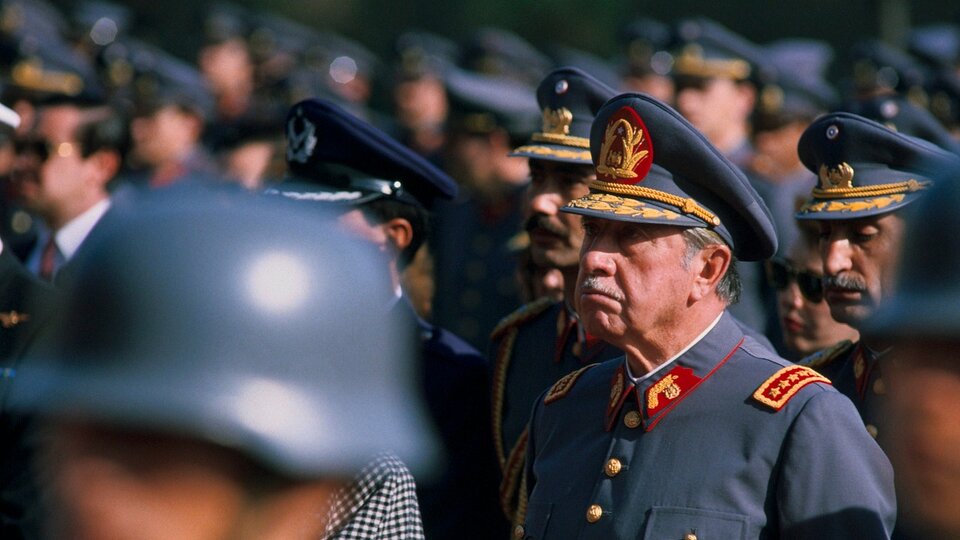More than half a century after the implementation of one of the most aberrant programs of the Pinochet dictatorship, Chile launched a pilot plan to speed up the search for some 700 victims of illegal adoptions committed during the last military regime. Chilean justice estimates that the total number of boys and girls adopted without the consent of their mothers and fathers in that period could reach up to 20,000. The pilot initiative announced this week by the Chilean government will last one year and will offer support to the families of 700 victims of illegal adoptions. In addition, it will facilitate access to taking DNA samples from victims living abroad. Still the wounds are far from closed.
first clues
When in In 2014, a series of complaints from families pointed to the responsibility of the Chilean priest Gerardo Joanon for his role as an intermediary in illegal adoptions, the problem of the appropriations of boys and girls reached the Chilean press through the report of the Center for Journalistic Investigation of Chile (Cyper). According to Cipper, Three types of maneuvers were used to carry out the theft of babies and children: making mothers sign documents they did not understand, lying to them by informing them that their children were stillborn, or declaring women incompetent to raise children.
In 2017, the Chilean Supreme Court appointed Mario Carroza, a prominent human rights magistrate, to take on the investigation. In 2019 Carroza shook the country with the result: “we could reach a figure of 20 thousand children” between 1970 and 1999, the year in which, according to the magistrate, there was also an increase in adoptions of Chilean children. Carrizo had also specified that it is still necessary to determine if they left irregularly “with documents that were not correct.” Among the destinations of the thousands of Chilean boys and girls were Sweden, Italy, France and the United States.
A state policy
As explained by Karen Alfaro, a researcher at the Universidad Austral in her research Chilean boys and girls adopted by Swedish families. Diplomatic proximity in times of the Cold War (1973-1990), the first reports of the Investigative Police of Chile pointed the responsibility of irregular adoptions to the Swedish Adoption Center where its employees (mainly social workers) participated as “captors of boys and girls, mainly from poor families”. However, the child trafficking plot also had the complicity of public hospitals, doctors, children’s homes, and nurseries.
Alfaro studied diplomatic documentation from the Chilean embassy in Stockholm, including descriptive reports on the dissemination of the image of Chile and its childhood in Swedish media, and the reaction of the military regime authorities to the so-called “anti-Chilean campaign” of the community. of Chilean exiles who denounced the human rights violations of the Pinochet military dictatorship.
In her research, the historian posits that “The transnational adoption of poor Chilean boys and girls to Sweden was valued by the military dictatorship as a mechanism of diplomatic and political proximity, because it allowed establish links with far-right institutions and sectors in Sweden.”
rebuild history
In recent years, reports of illegal adoptions that took place during the last Chilean dictatorship have increased. In some cases, the complaints were initiated in Sweden by children illegally separated from their parents, now adults trying to reconstruct their personal history. Furthermore, in October 2021, the Swedish government announced that it would start investigating more than 2,000 irregular adoptions of Chilean children during the dictatorship of Augusto Pinochet in Chile.
For Maria Diemar, the 2017 investigation of Chilean documentary filmmaker Alejandro Vega was one of her first steps in learning about the circumstances of her adoption. Diemar asked Vega to review his adoption papers, and the reporter confirmed his suspicion: Diemar’s papers had errors and omissions. Vega’s film stated that most of the women who were separated from their babies were poor and in some cases also belonged to indigenous Mapuche communities. Like Diemar’s mother, according to told the British morning Guardian.
a lucrative business
Both the Alfaro and Vega investigations agree that illegal adoptions have become a highly lucrative business. Vega describes adoptions as a “very lucrative business in a dark period.” The journalist also accesses the forms in which the adoptive fathers and mothers choose the phenotypic characteristics of the children they seek to adopt: dark, brown, light brown, white.
According to Alfaro, the adoptive parents in Europe and the United States paid international adoption agencies sums ranging from $6,500 to $150,000 for each child. A portion of the fees went to Chilean professionals who helped identify ‘fit’ children and separate them from their parents. In the complaints that reached the Chilean media, the mothers who finally had the opportunity to meet again after more than 30 years with their children revealed that they had not agreed to give their babies up for adoption and that they had not signed any document because at that time they did not know read or write.
“International adoption agencies had representatives in Chile who set up networks of paid intermediaries, mostly public officials, to provide children for adoption,” Alfaro told Guardian. “There were social workers paid to make false reports of child abandonment, and there was money for doctors and nurses to produce birth certificates saying the baby had died at birth, and judges paid to approve transfer of custody.”
.
